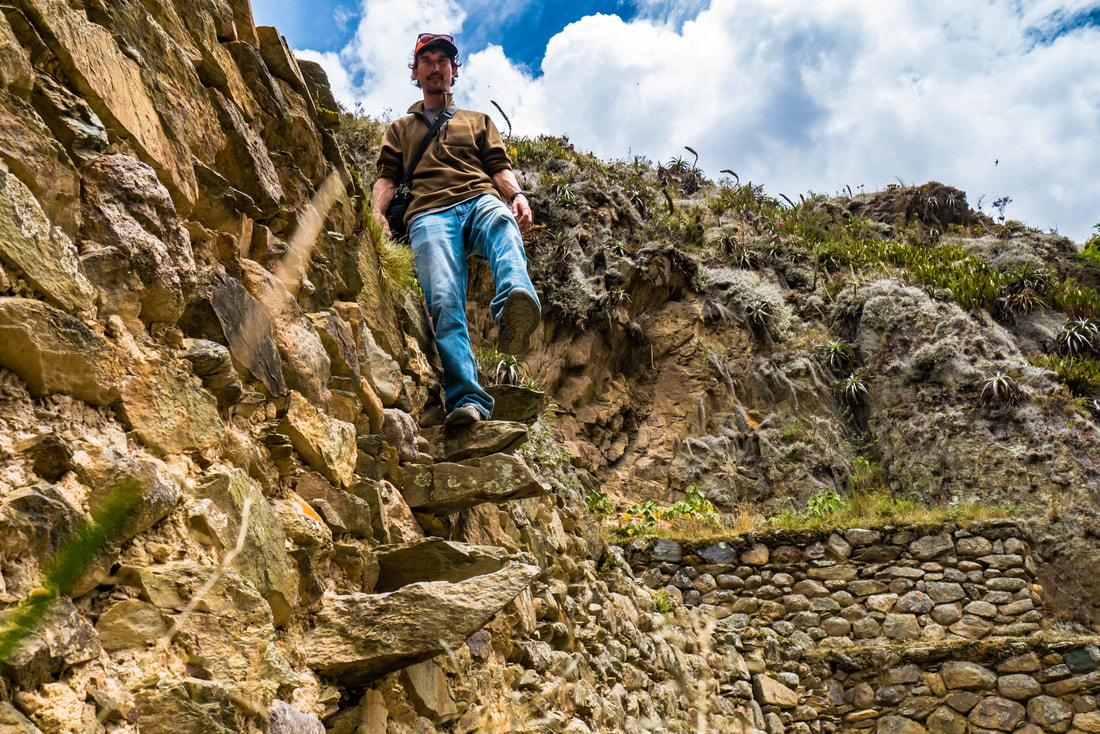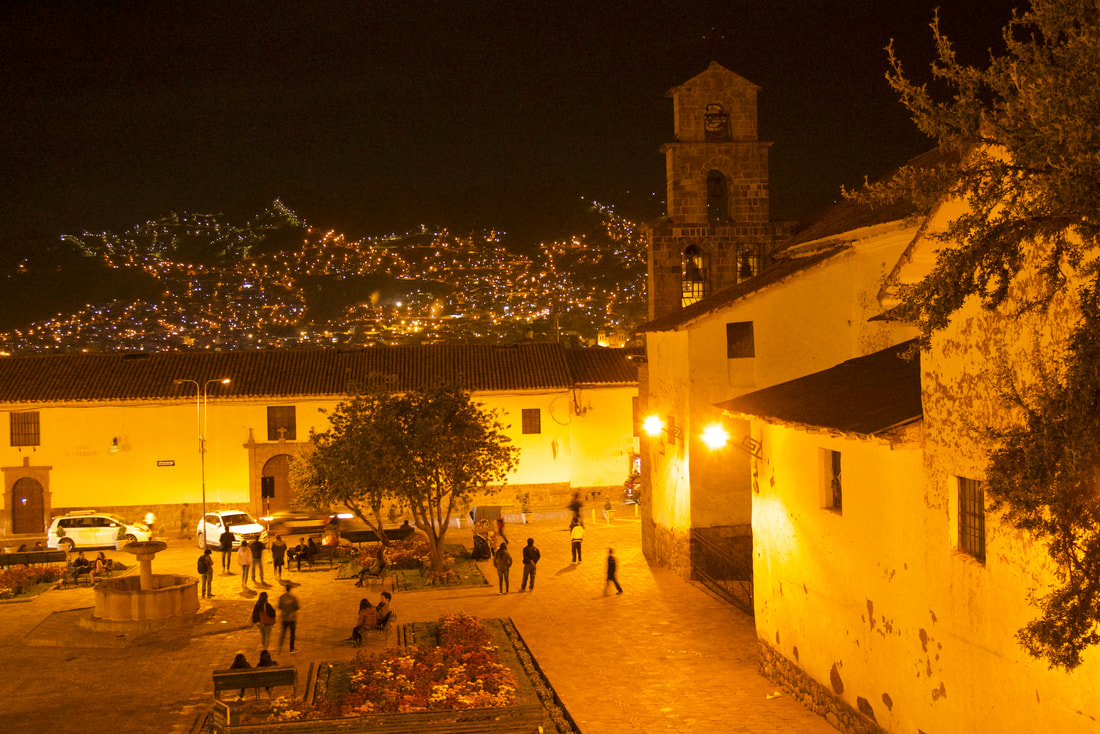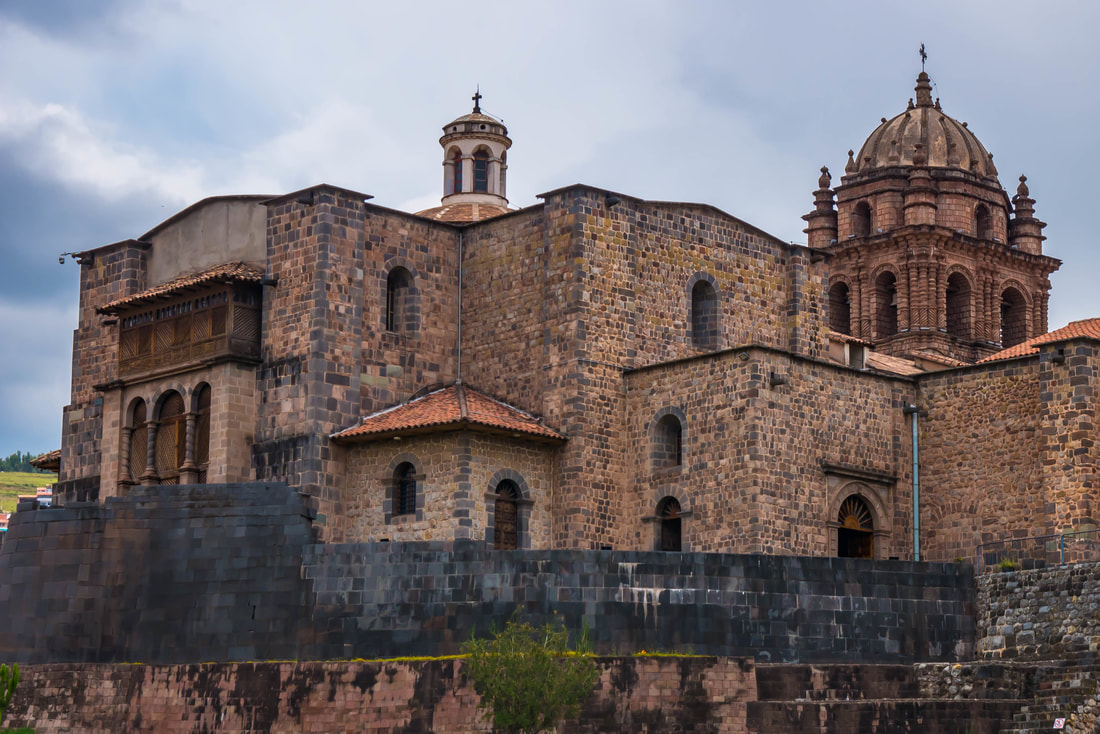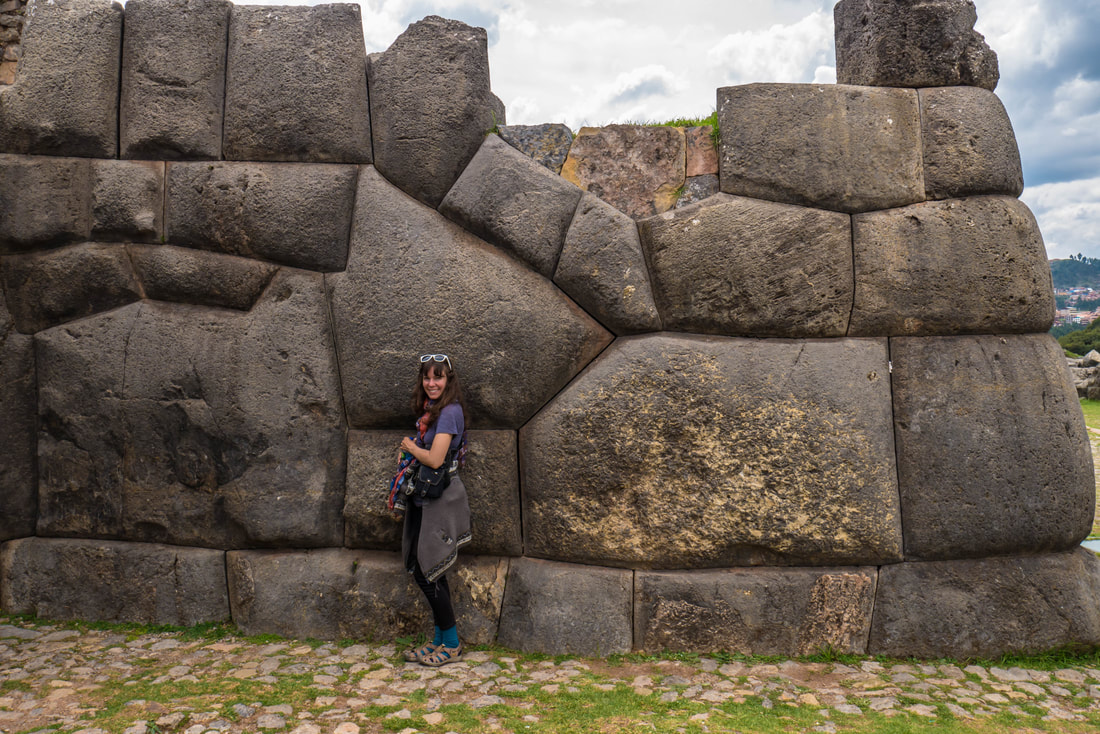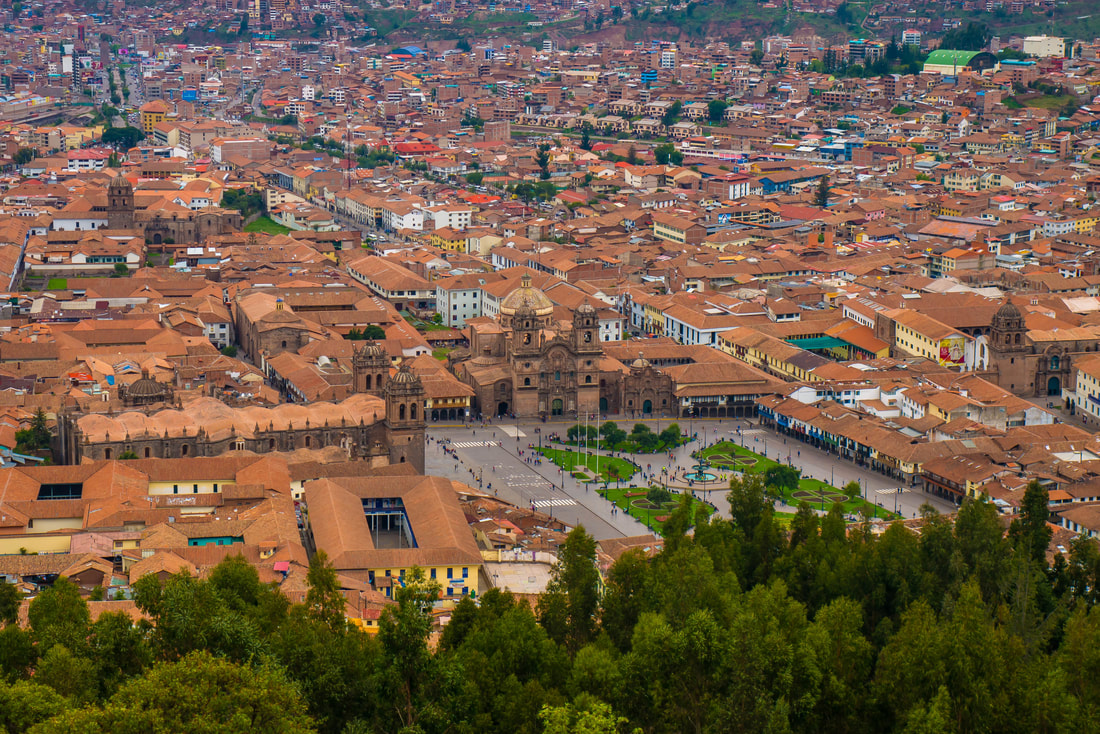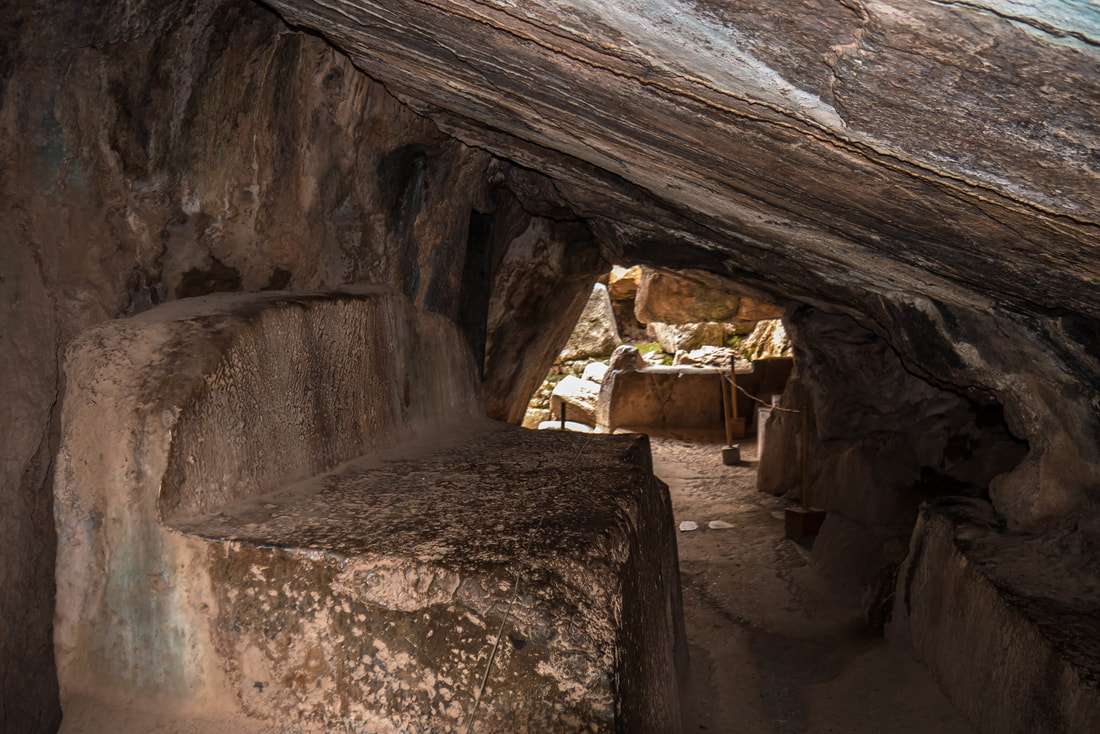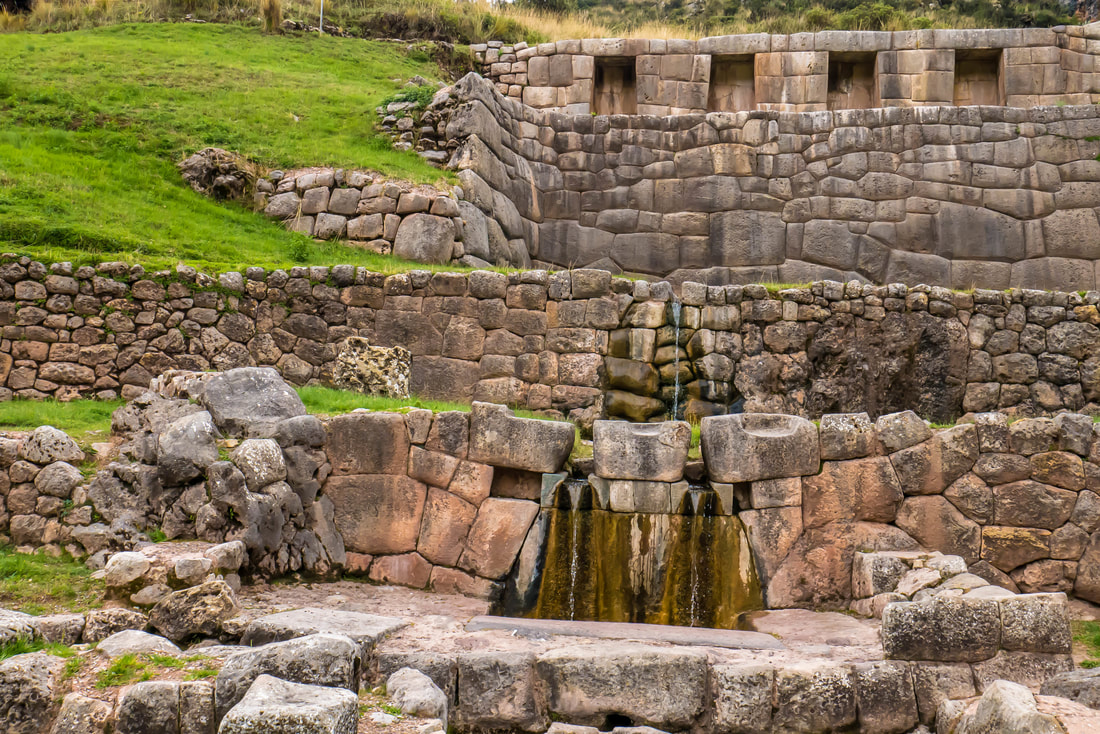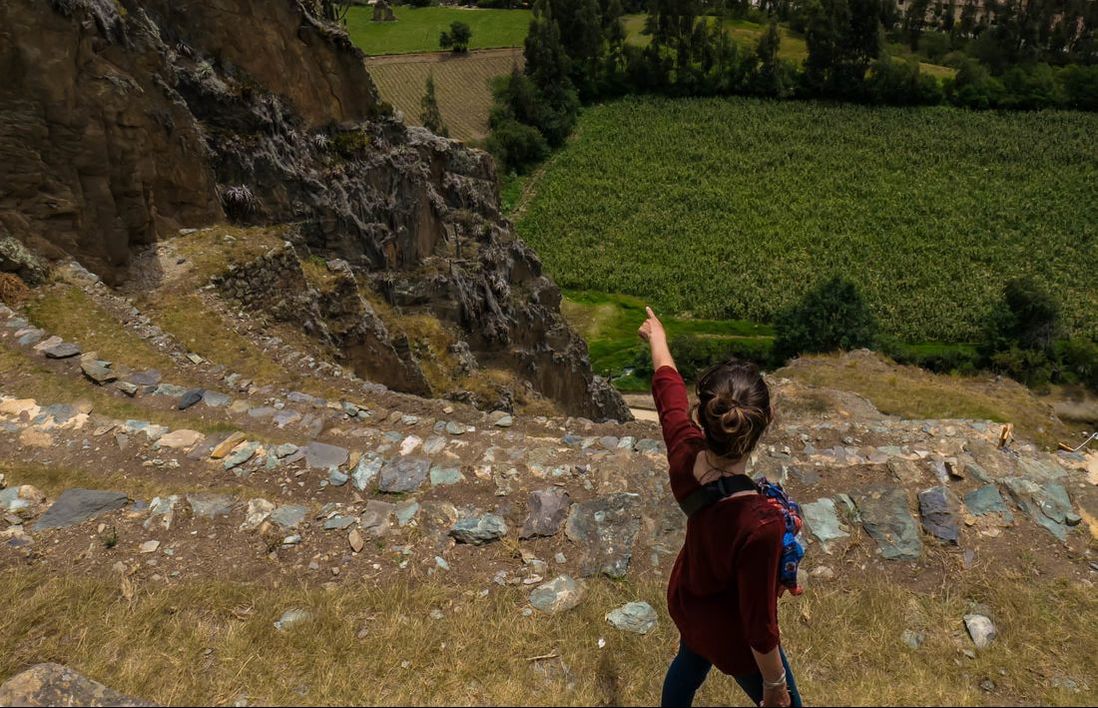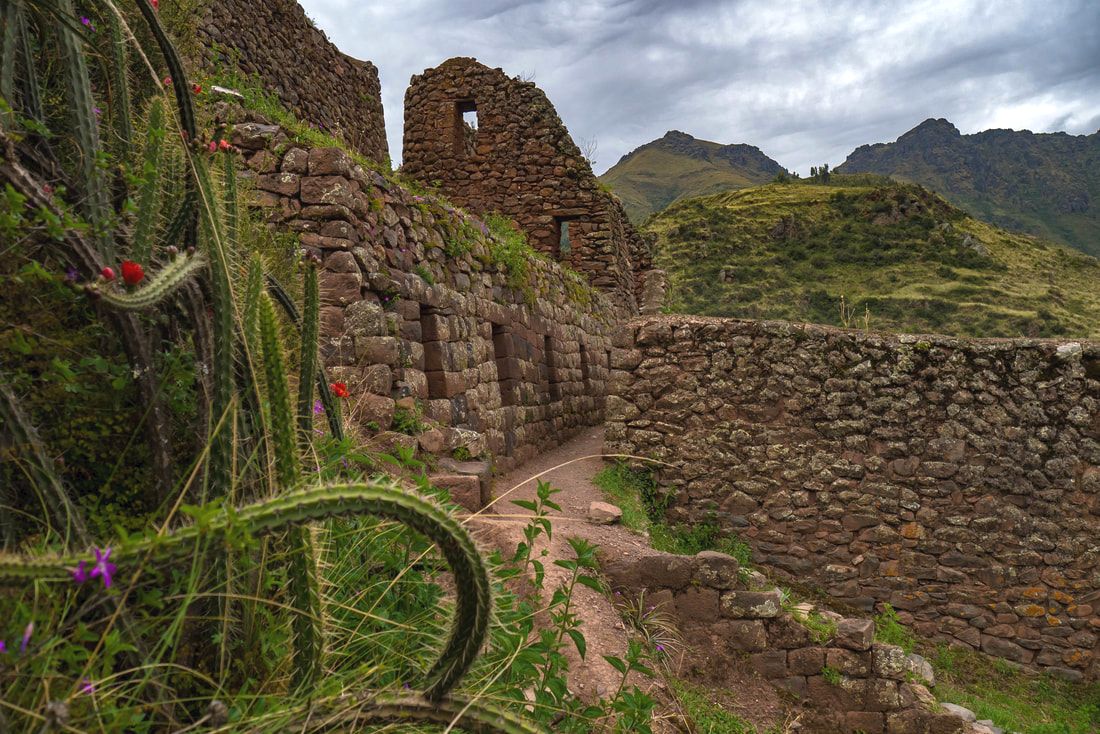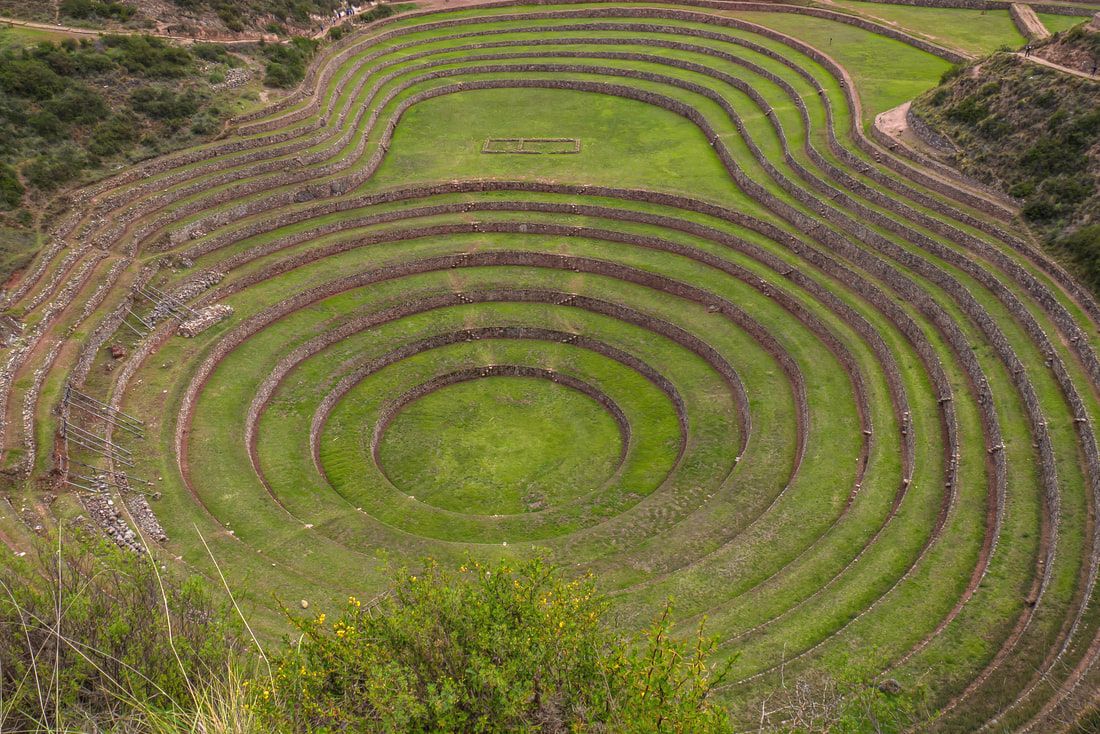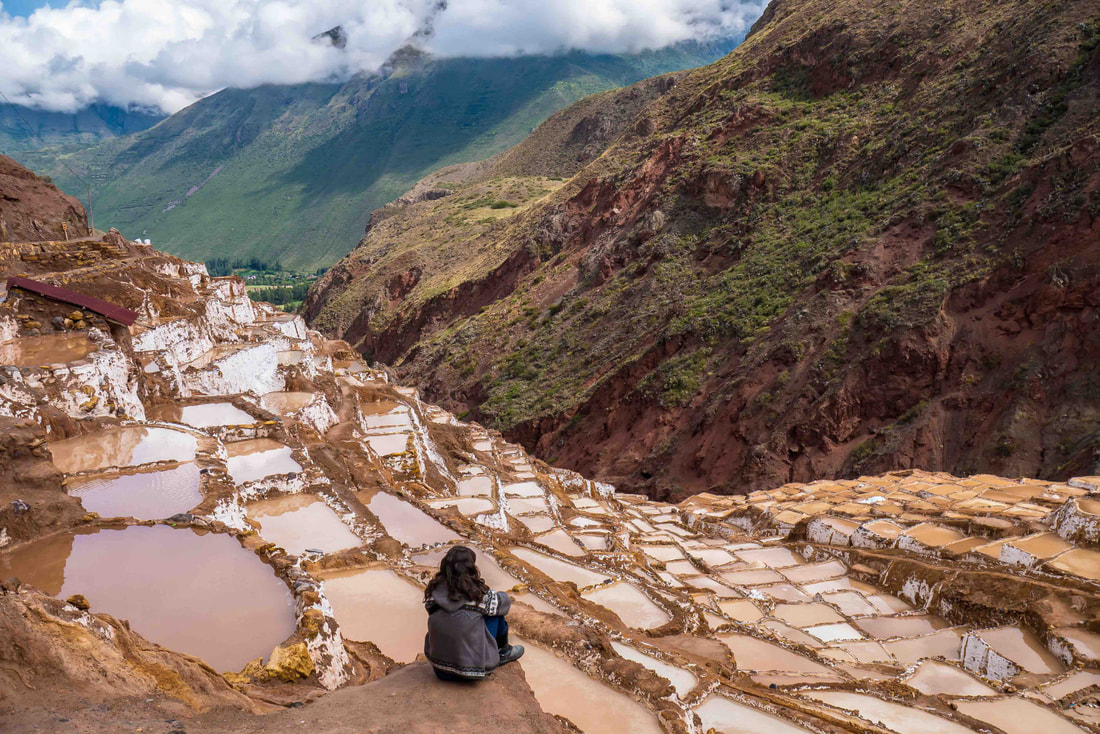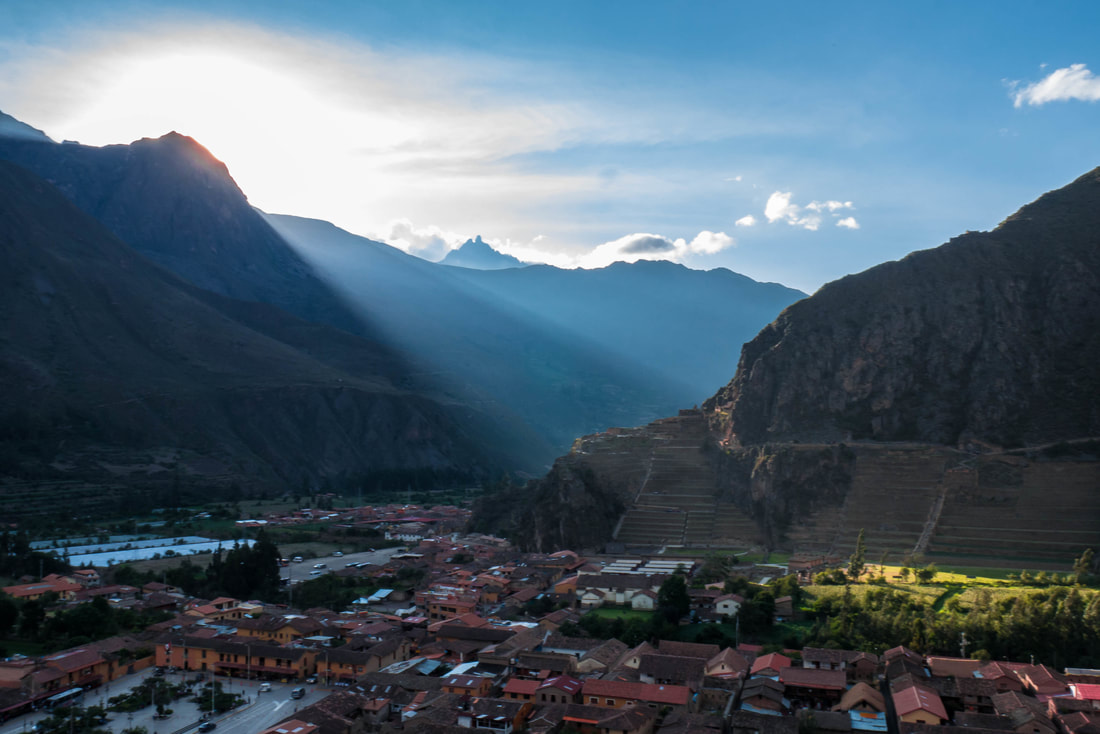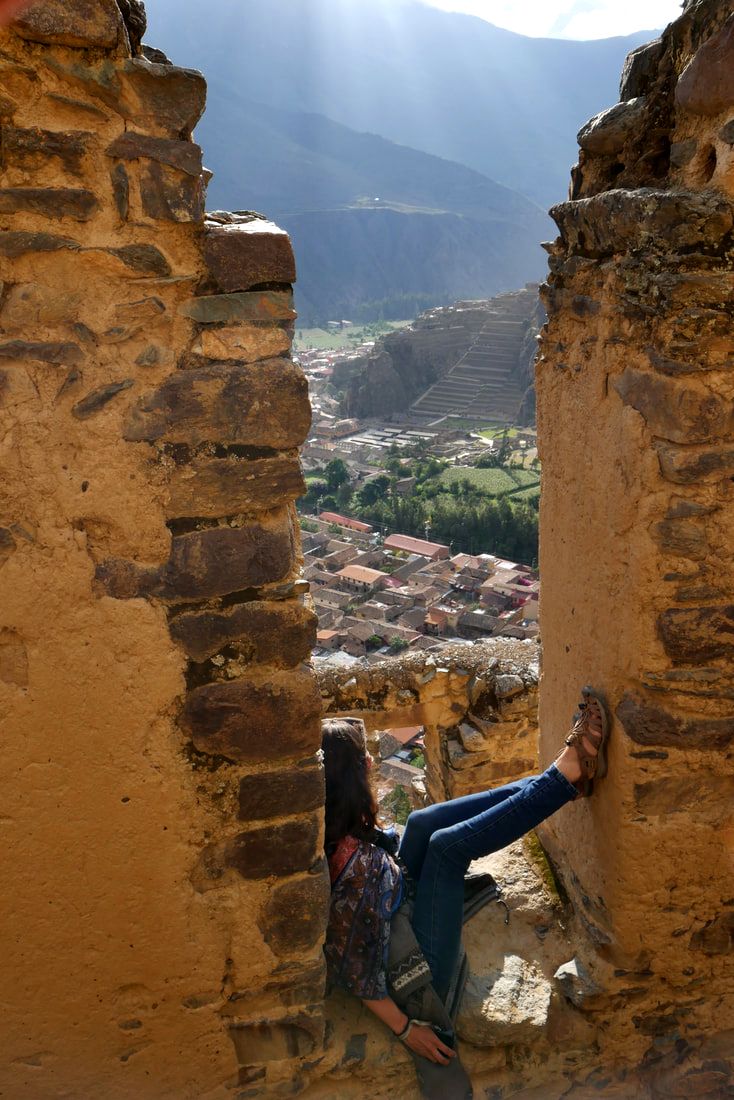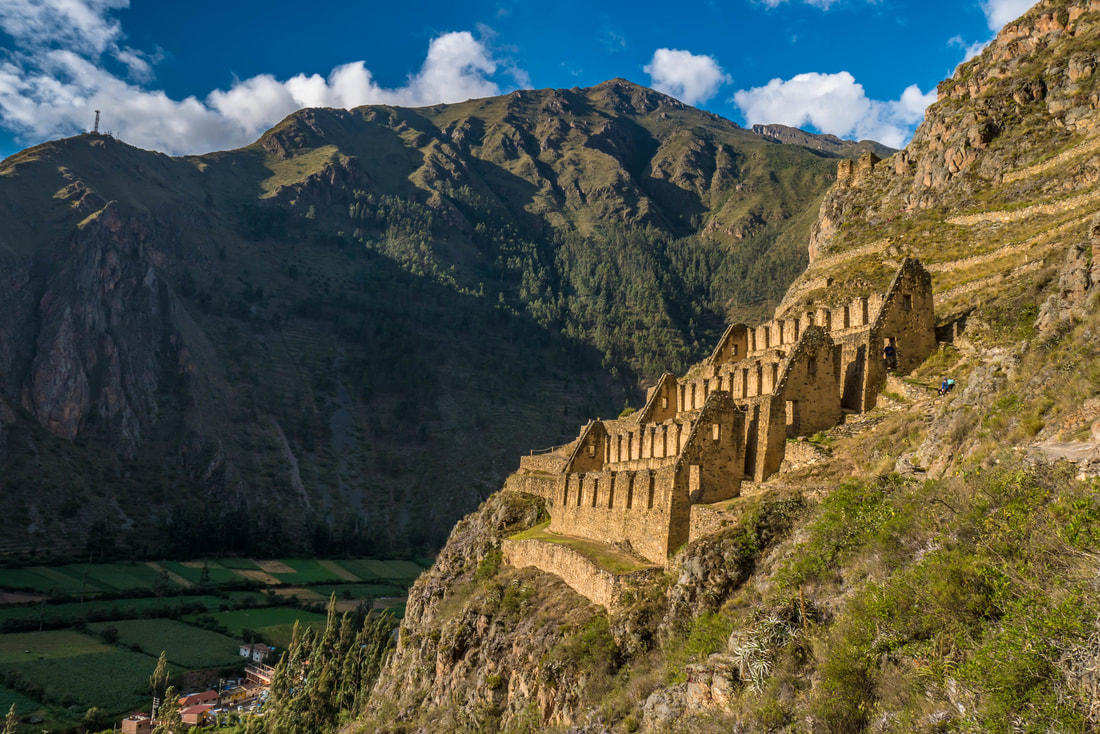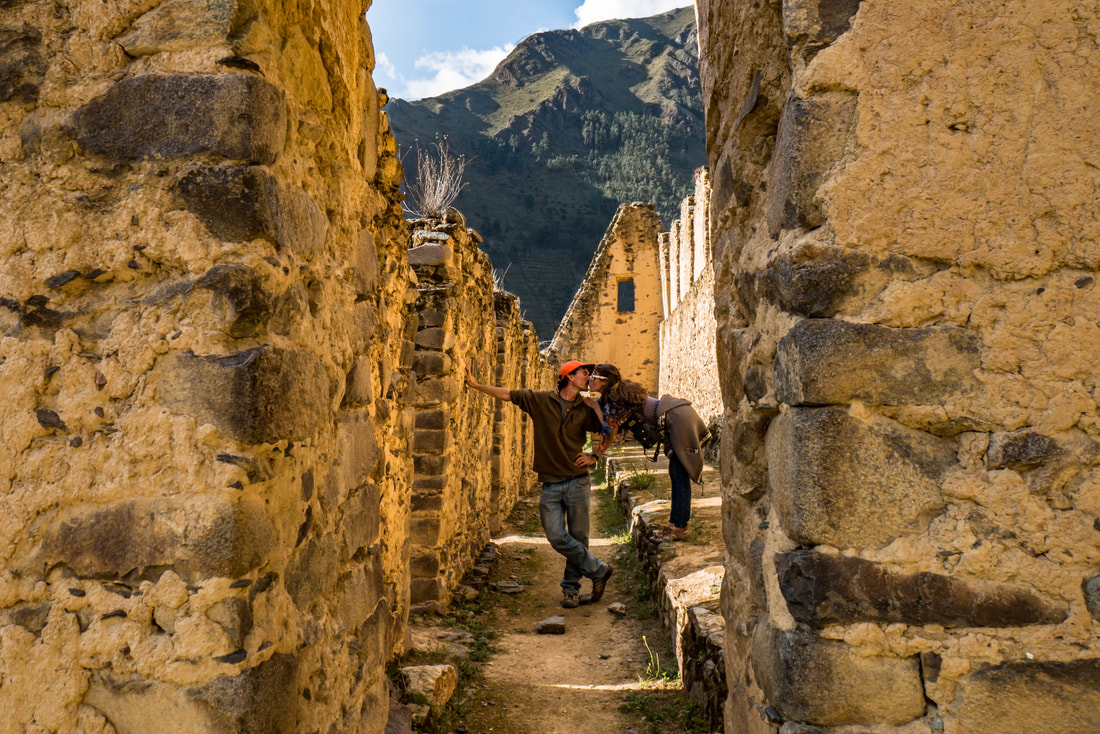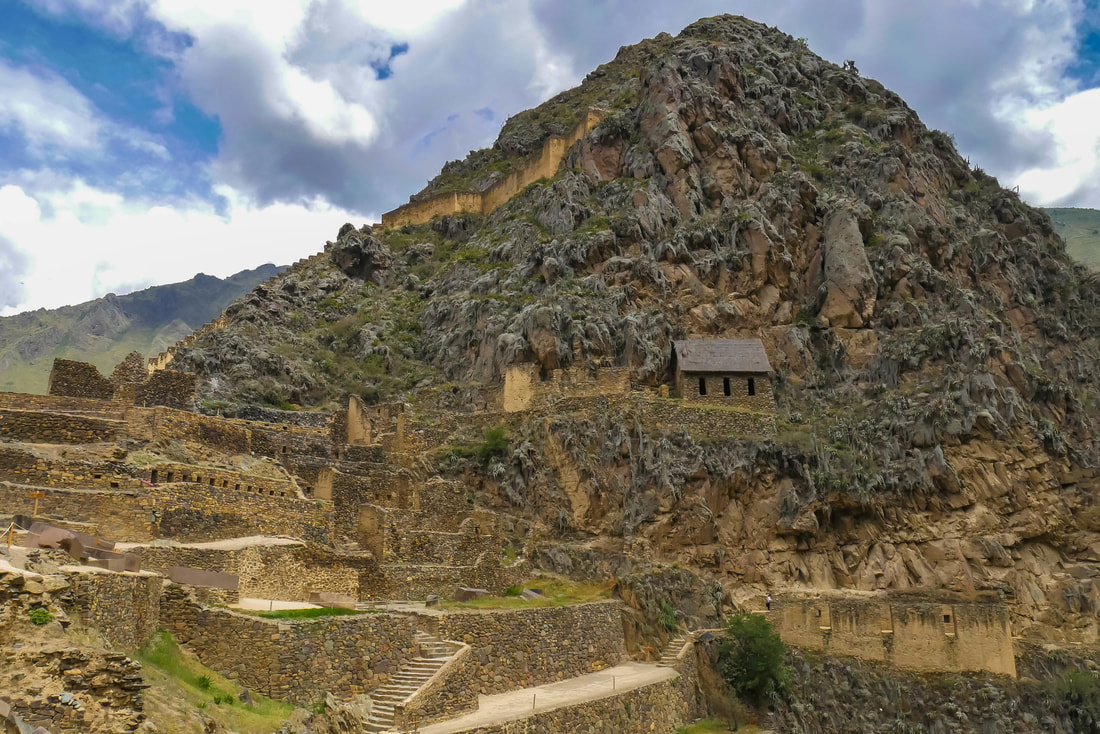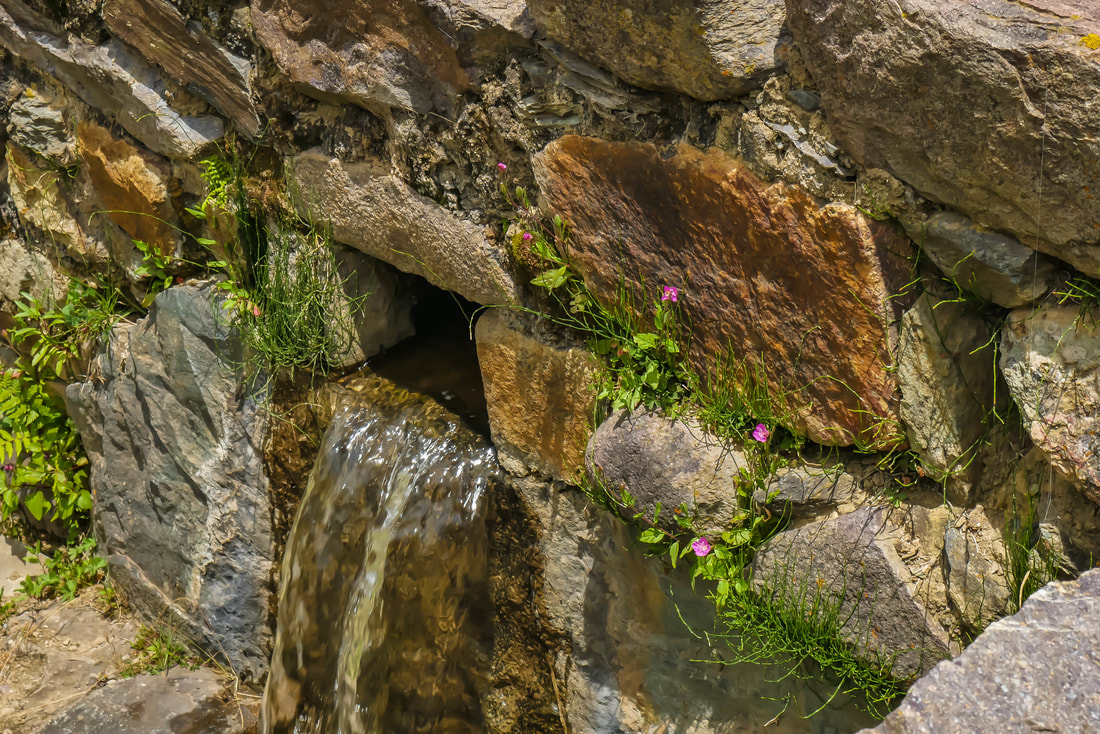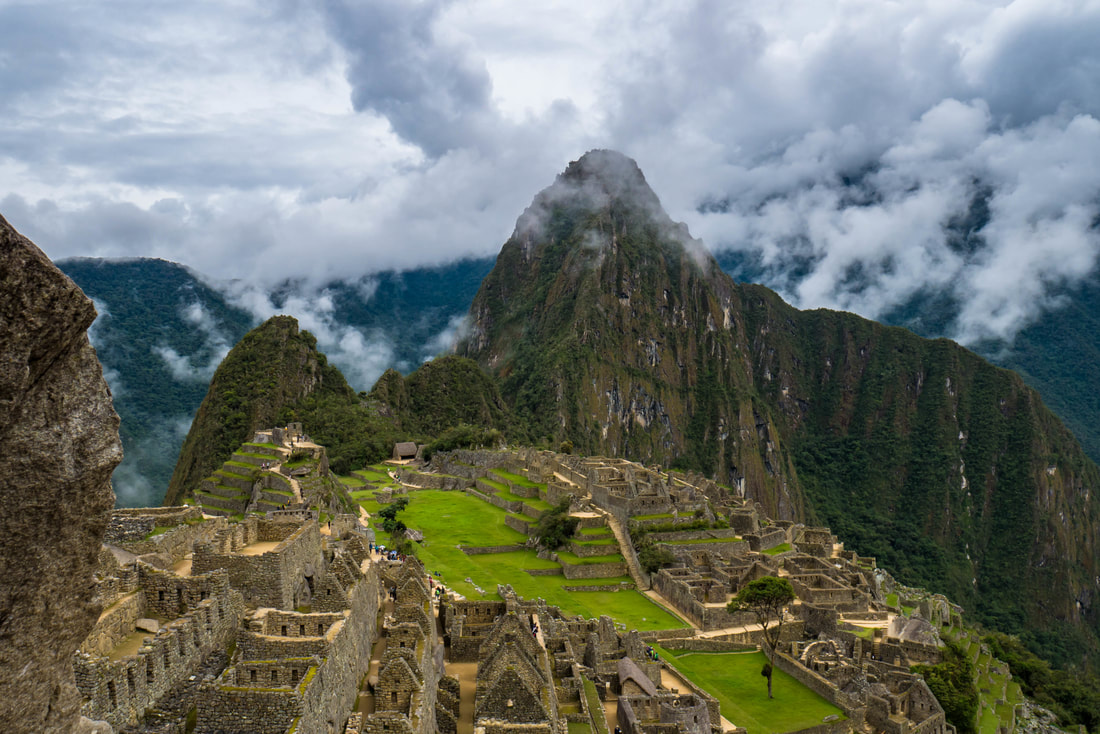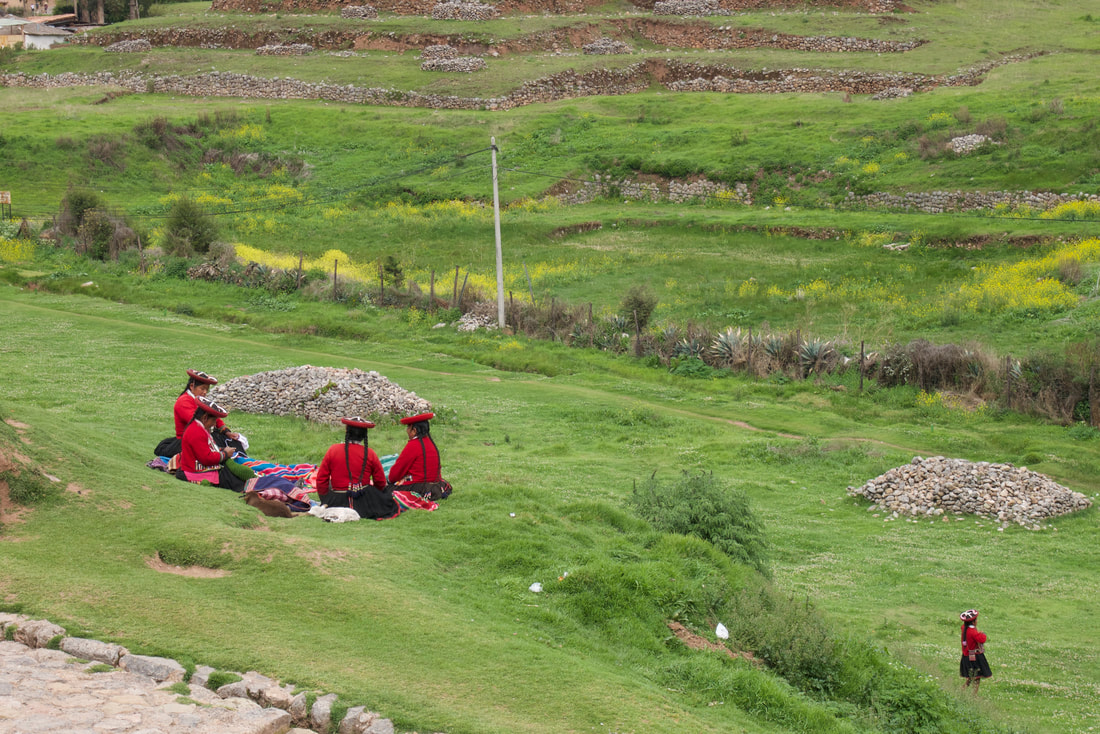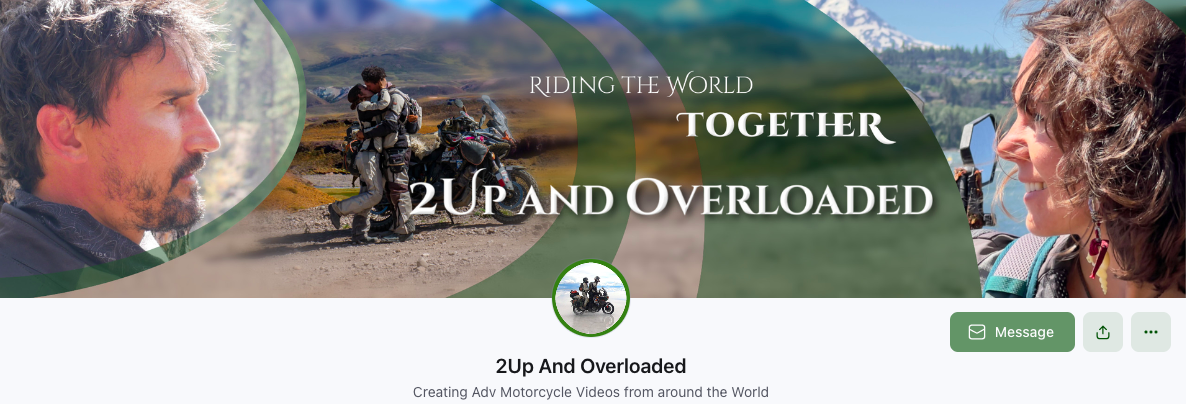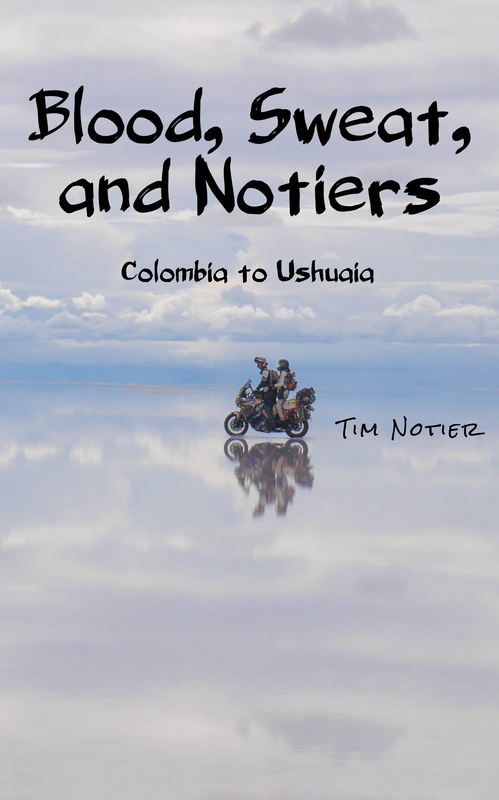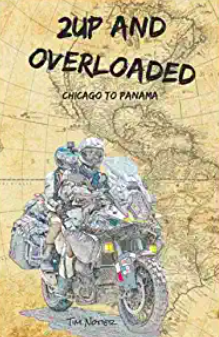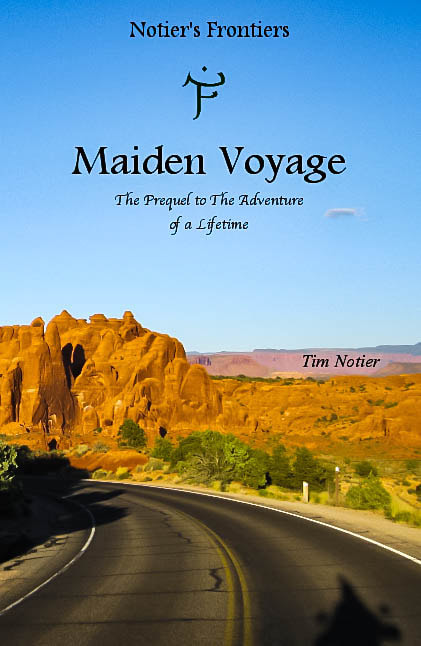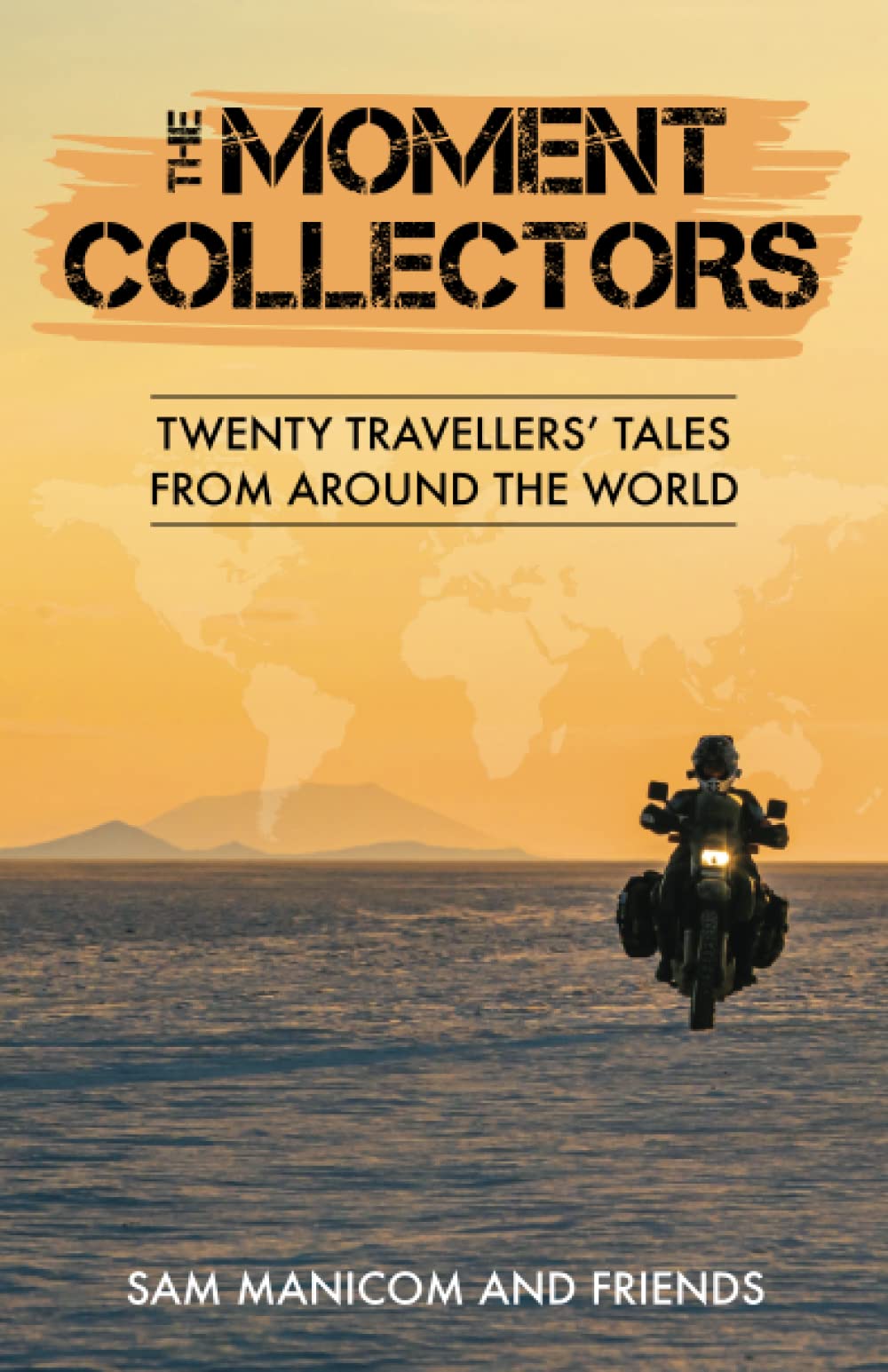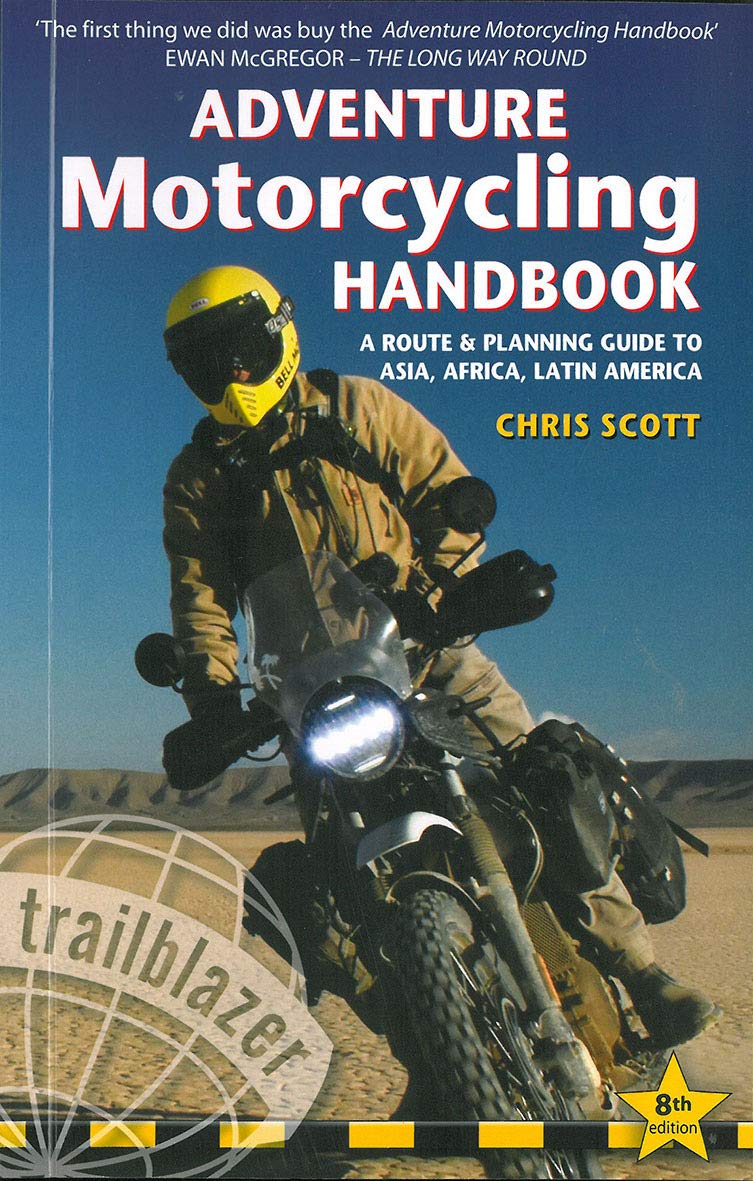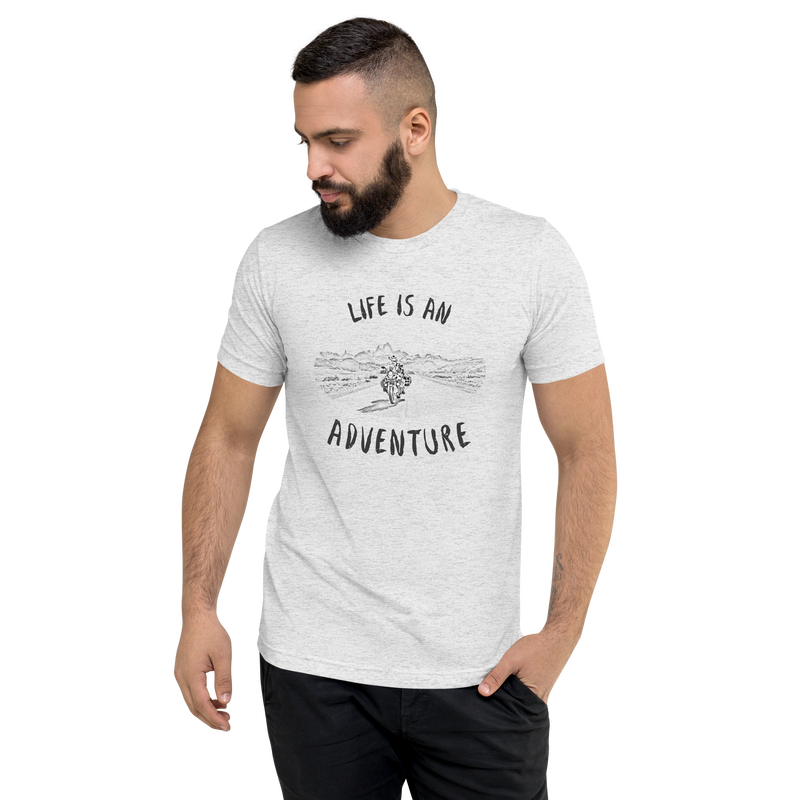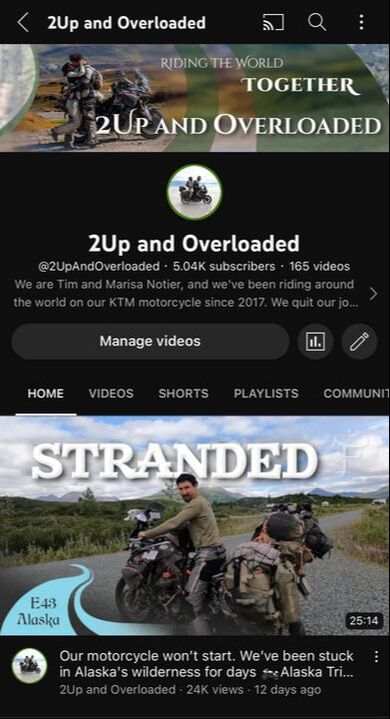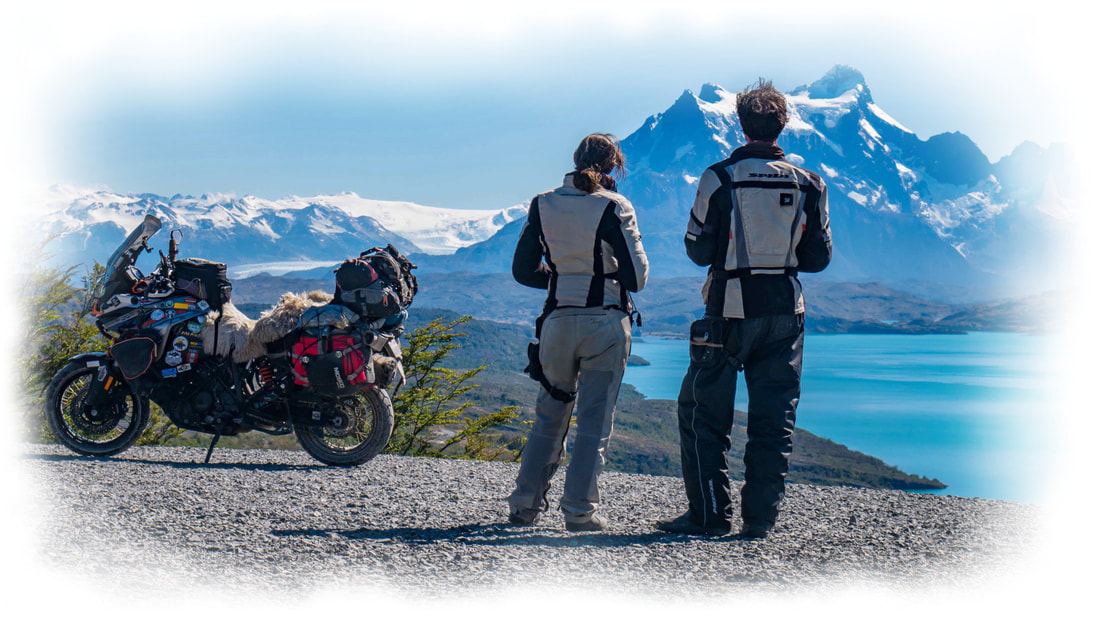By MarisaIn the 15th century, it was the largest empire in the world, and it still captures the hearts and minds of people today. Though the Inca Empire didn't last long, it made its mark on South America by reshaping the landscape and creating structures that are still marveled at by people from around the globe. Getting up-close and personal to Peru's Incan past has been a dream of mine since I was a child. And now that Tim and I finally found ourselves in Cusco, the old Incan capital, I could just feel the excitement mounting inside me. I wanted to see and experience it all. And so we made a plan. Our Paved "Inca Trail"Machu Picchu is of course Peru's big ticket tourist attraction, and probably the most famous Incan settlement on earth. But Tim and I decided that we were going to see Peru's other Incan sites first and save Machu Picchu for last. This turned out to be great, as it felt like everything we were seeing was leading up to the finale of this spectacular lost city of the Inca. The route became our own sort of Inca Trail, but one we could do on our motorcycle. So if you are interested in coming to Peru and have the time and means to do this, and if you also have the burning desire to see South American ruins as I do, then I would highly recommend taking this route. Above is a map of the gradual progression of ruins that we visited, starting in Cusco and ending in Machu Picchu. I would recommend at least six days for this, and that would give you enough time to absorb every site without being rushed or ruined-out. We'd heard that in order to do all the sites on this route in the most cost-effective way, we first needed to buy a full boleto turistico (tourist ticket) from the COSITUC office in the historic center of Cusco (-13.518063, -71.978563). It cost us 130 Soles (~$39) per person, was valid for 10 days, and allowed us to get into all the major Incan sites around Cusco and some museums, but it did not cover Machu Picchu. That is a separate ticket, and if you are going in the high season (June-Sep) you may want to consider buying your Machu Picchu ticket in Cusco as well, as they sometimes sell out weeks in advance. Otherwise, you can buy it when you get to Machu Picchu Pueblo (Aguas Calientes), like we did. The boleto turistico is kind of expensive (at least when you are on a budget), and there are ways to see many great ruins without it. So if you want see some Incan sites while spending a little less cash, then read on, because I'll label which need the boleto, and also give you some tips on what you can see for next to nothing, or for free. CuscoWe started off in the old Incan capital city, which is like a living ruin in and of itself. It's a touristy place, for sure, but well worth every moment spent meandering its quaint streets lined in Incan stonework and Spanish churches. You could spend a fortune here, but if you look hard enough, you can also find some great deals. And in all honesty, no matter what your budget is, Cusco seems to be a magical place for pretty much everyone. As far as Incan construction goes, the crown jewel of the city is Qoricancha, the Incan ceremonial center that was later turned into a church by the Spanish conquerors. Though a lot of Incan work was lost, today there is still much of the original pre-hispanic walls left, and for only 15 Soles a person (~$4.20), it's definitely worth a peek inside. The boleto turistico does not give you access to Qoricancha, but it does allow you to go into the Qoricancha Museum which is located under the park by the main road in front. The ticket also includes three other museums in Cusco: the Museum of Popular Art, Regional History, and Contemporary Art, as well as access to the Pachacutiq Monument, two traditional villages near to Cusco (Tipón and Pikillacta), and a daily dance performance at the Native Music and Dance Center. We did not see these things, but our friends said they loved the dance performance. Sexy Woman and her FriendsSaqsaywaman - included on the boletoOften called by foreigners “Sexy Woman," Saqsaywamán (SAAK-sai-wa-MAN) is actually an Incan fortress built on the hill overlooking Cusco. They say Cusco was designed to be in the shape of a puma, the sacred animal of the earth to the Inca, and Saqsaywamán was its head. Saqsaywamán is an expansive complex of impressive stonework with some of the largest boulders used for Incan walls in existence. You can even see the looming structures of Saqsaywamán from Cusco, and from the ruins you can get an incredible view of the city. If you like walking uphill at high altitude (11,200 ft, 3,400 m), then you can hike up there for free from Cusco. But if you don't, then you can hire a cab like we did or take a bus. If you have your own vehicle, then take that, because the area surrounding Saqsaywamán is filled with other ruins which are pretty far apart for walking, but doable in one day by vehicle. We were definitely kicking ourselves for not bringing the bike when we went. Qenqo - included on the boletoA bit up the road from Saqsaywamán is Qenqo (KEN-ko), a temple carved out of a giant rock monolith, making it quite unique looking. And it has a bit of a sinister past as it was the site of human sacrifices. Temple of the Moon - freeNear Qenqo, there is a place called Templo de la Luna, which is an outcropping of rock with a trail that goes up it, and the area was supposedly dedicated to the mother Killa, or moon. If you're looking for free ruins, this is a great one, and you can even make a day trip by hiking around and exploring the other smaller free sites nearby. Puca Pucara - included on the boletoFrom there, it's either an hour walk up the road or a short bus ride to Puca Pucara (catch the blue and white Huerto bus for one Sol, which is $0.30). Puca Pucara (PU-ka pu-KA-ra) is a picturesque mountaintop fortress meaning red fort because of the red granite stones used. It is said that this outpost was built to protect Cusco from invading tribes coming from the Amazon region. Tambomachay - included on the boletoAnd finally, just a five minute walk from Puca Pucara is Tambomachay (TAM-bo-ma-CHAI), the last of the major Incan ruins near Saqsaywamán. It's also known as the “Bath of the Inca" because it has gorgeous fountains of trickling water, and may have served as a spa for the Incan elite. You can do all these sites in a day as long as you have a vehicle, hire a cab, or take buses. Either that or you're a hiking athlete who's already climbed Everest twice. The Sacred ValleyFrom Cusco to Machu Picchu, there is a nice paved road (mostly) that connects every major Incan ruin in a relatively straight line, starting with Pisac. Tim and I went out of order because we really wanted to meet up with our friends at Moray, which was super fun. But without that variable, I would go in order with Pisac first. Pisac - included on the boletoThere is a cute cobble-stoned village of Pisac (PEE-saak) at the base of the mountains that is famous for its traditional morning market, and then there are the nearby cliffside ruins of Pisac high up on the peaks. These are some of the most impressive ruins you'll ever see, and because they're perched at the top of rugged mountains, they offer spectacular views of the surrounding countryside. The site is surprisingly large as I found that after every turn in the cliffs, it just kept going. There are baths, fountains, geometric terraces, altars, and a temple to the sun god, Inti. It has a bit of everything you could ever want out of Incan ruins, and if you are adventurous, there are even trails to go off to distant cliffside ruins that you can see from the main ones, and you would definitely be the only people there. Moray - included on the boletoThese terraced concentric circles look like they were made by aliens, and I'm sure there are people out there who believe that. Moray (MO-rai) is a lot more impressive in person than in photos, because as you stand on the edge of these terraces, you can really appreciate the immensity and perfection of them. Some say they were used for agricultural experimentation, but the truth is, nobody knows for sure why they were built. Maybe the Inca just wanted outsiders to see them and stand in awe at their magnificence. The hike around the terraces shouldn't take more than 45 minutes, and if you don't like hiking, this is one of the few places that doesn't require lots of walking since you can park almost up to the edge and still get the full effect. The road here is dirt and goes through the cute village of Maras, a perfect place to stop for lunch. Maras Salinas - not included on the boleto, costs 10 SolesNo more than a half hour away from Moray and past the town of Maras are the salt pools of Salinas, which is Spanish for saltworks. Originally, Tim and I had no intention of seeing a bunch of salt, but as our friends were camped there, we decided to go (camping overnight is free with entry). And I am so happy we did. The terraced evaporation pools were used by the Incas to collect salt from the salty stream that they ingeniously channeled onto each platform. It's strangely beautiful when the sun hits the shallow water, and the amount of work that went into converting this mountainside into their salt collection station is incredible. The boleto turistico does not cover this site, but it costs only ten Soles to get in (~$3). And best of all, the bathrooms are stocked with toilet paper and paper towels, whoa! Ollantaytambo - included on the boletoOllantaytambo (o-YAN-tai-TAM-bo) is not to be missed whether you have the boleto turistico or not, as it is one of my favorite places in all of Peru, and maybe even all of South America. It is both an Incan town and Incan ruins, and the village itself (no charge to visit) is the best representation of Incan city planning that exists today. In a perfectly grid-like design of narrow pedestrian-only streets, and buildings built onto Incan stonework, Ollantaytambo has channels of bubbling water along every road that not only give the town its plumbing, but also an atmospheric sound that follows you everywhere. Ollantaytambo is touristy, but I can forgive it for that because I don't blame anyone for wanting to go there, and then wanting to stay forever. And what's more, the village is flanked on either end by granite peaks jutting into the air with Incan ruins along their sides. One of these sites, the old Incan granaries called Pinkuylluna (PIN-kui-YU-na), is free to go to and offers fantastic views. The hike up is a bit strenuous, but once you're there, you will be thankful you made it to what are perhaps the most spectacular grain warehouses in the world. And then across town there are the main ruins of Ollantaytambo (boleto turistico required), complete with a fortress, temples, terraces, and baths. Climbing up into the fortress and seeing the Temple of the Sun with its calendar to judge the solstices was amazing enough. But my personal favorite part were the baths and buildings below the fort where channels of flowing river water made for heavenly fountains in every house. I could just see the Incan Emperor Pachacutiq admiring this masterpiece of his with complete pride. Machu PicchuFinally, the literal pinnacle of all Incan ruins: Machu Picchu. It's not cheap to go there (the ticket alone is 152 Soles, ~$45), but it's one of those things you really must do when visiting Peru. I was actually quite worried about going because I'd heard that it had gotten so touristy, that it wasn't worth it. But Tim and I, and our motorcyclist friend Aditya who came with us (a.k.a. Mak), really lucked out. Maybe it was because we went in the low season (Dec-Feb), or maybe it was because the weather was perfectly misty and mysterious. But my visit to Machu Picchu was everything I'd ever wanted and more. Because you can't actually get to Machu Picchu by road, it's one of the most complicated sites to visit, in my opinion. So I'm going to write a whole blog on how we did it with the motorcycle, and how we cut the costs of buying an expensive train ride (the cheapest of which is $45 per person from Ollantaytambo, one way, yikes!). So stay tuned, and I hope I have inspired somebody out there to experience these incredible Incan sites for themselves. A Final NoteOne of the greatest things about visiting these Incan ruins was that we came to realize that even though the Inca Empire may be gone, the Inca people and their culture are still here. By riding along our paved version of the “Inca Trail", we came face to face with the Incan descendants who built these monuments, we heard them speak their soft and majestic language of Quechua, and we were dazzled by the colors of their textiles and the smells of their cooking. Even the rhythms of these people is not just in the traditional pan-pipe music you hear playing in the tourist shops, but in the modern music that popular Peruvian artists are still making. So unlike Machu Picchu, the Incan way of life is not gone, it's not ruined, and it's not lost. It's here, it's alive, and in the land of the Inca, it's all around us. Join the Journey on YouTube |
Follow UsRide with us from Chicago to Panama!
2Up and Overloaded Get inspired by the tale that started it all:
Maiden Voyage 20 author's tales of exploring the world!
The Moment Collectors Help us get 40 miles further down the road with a gallon of gas!
Become a Patron for early access to our YouTube Videos!
Subscribe to our YouTube Channel!
Subscribe to our Blog by Email
|
2Up and Overloaded
Join our clan of like-minded adventurers...
Proudly powered by Weebly
Designed by Marisa Notier
